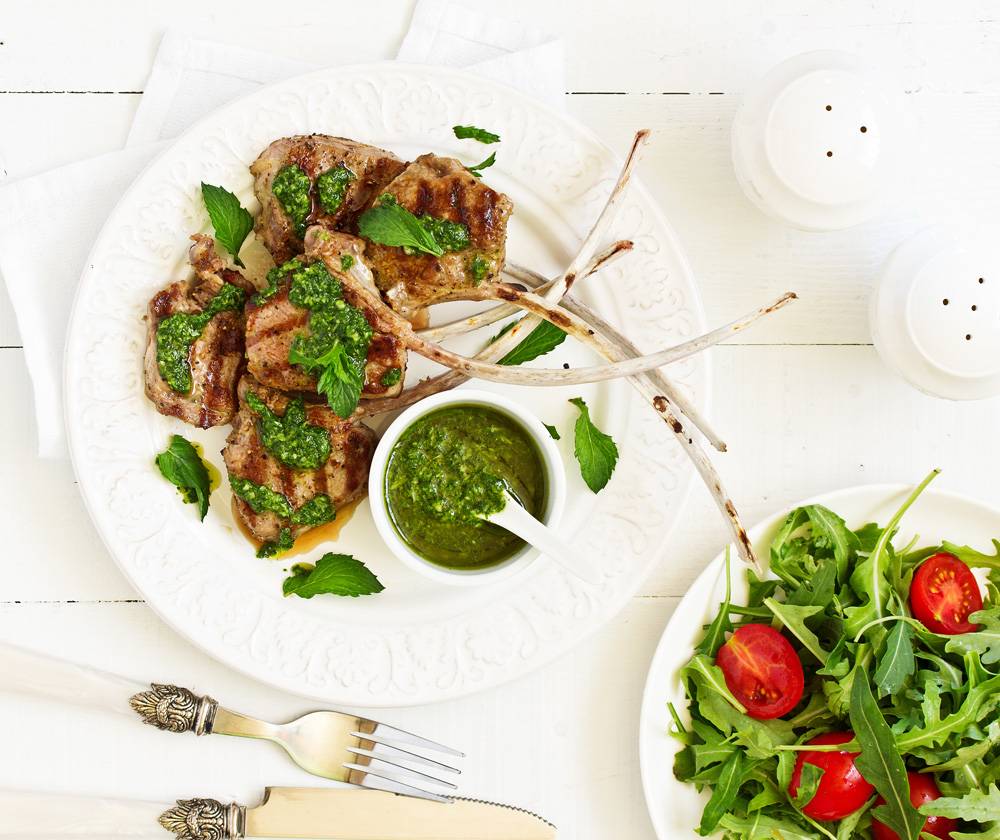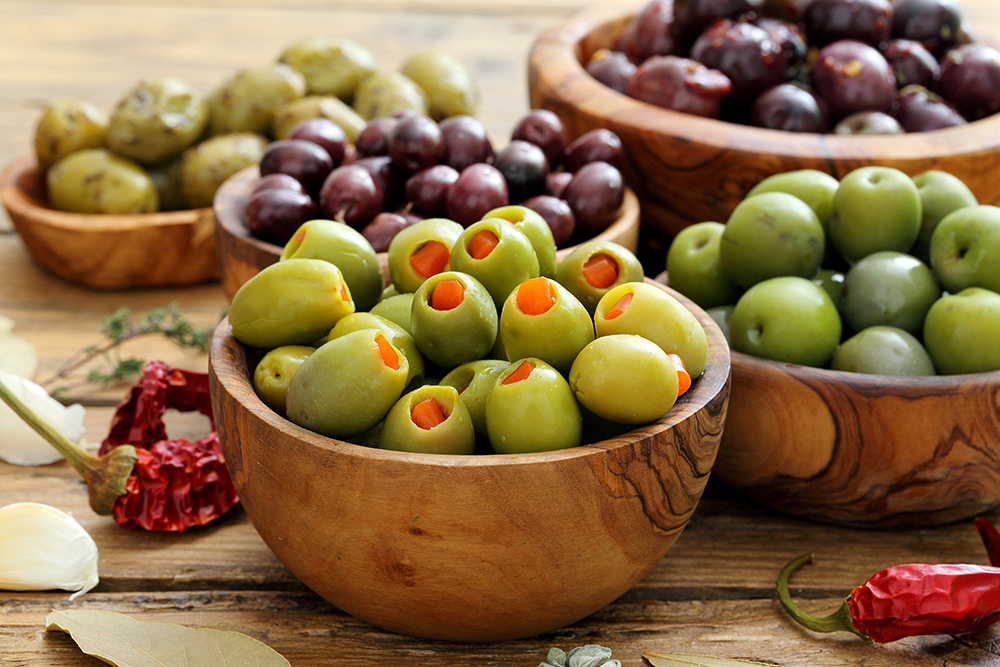Lamb is finally having its moment in American cuisine. Many of us didn’t grow up eating lamb, so if you’ve never tried it, you may just think you don’t like it. Or if you’ve only known it as a special occasion or holiday dish, it might not occur to you to shop for it on a regular basis. But lamb has a mild, tender taste that meat eaters will love, and loin or shoulder chops are perfect for the grill any day of the year. Salt, pepper, and a quick rub with extra virgin olive oil, and you’re set to go.
Ingredients
- 2 garlic cloves, peeled and roughly chopped
- 1/4 cup fresh mint leaves
- 1/4 cup fresh flat-leaf parsley leaves
- Zest of 1 lemon
- 2 tablespoons fresh lemon juice
- 1/4 cup shelled hazelnuts
- 1/4 cup extra virgin olive oil, plus extra for brushing on the lamb chops
- Kosher salt to taste
- Coarsely ground black pepper to taste
- 8 lamb loin chops
Directions
Step 1
Make the gremolata: In a blender or mini food processor, combine the garlic, mint, parsley, lemon zest and juice, and hazelnuts. Pulse several times, and then slowly add the 1/4 cup of olive oil. Process until relatively smooth. If the mixture seems stiff, add a small amount of water. Season with salt and pepper. Reserve.
Step 2
Preheat your grill to medium-high. Brush the lamb chops on both sides with olive oil, and season well with salt and pepper. Grill for 2 to 3 minutes per side for medium-rare. After letting chops rest for 5 minutes, plate two chops per person with a healthy dollop of the gremolata and pass the rest.
Yields 4 servings.




